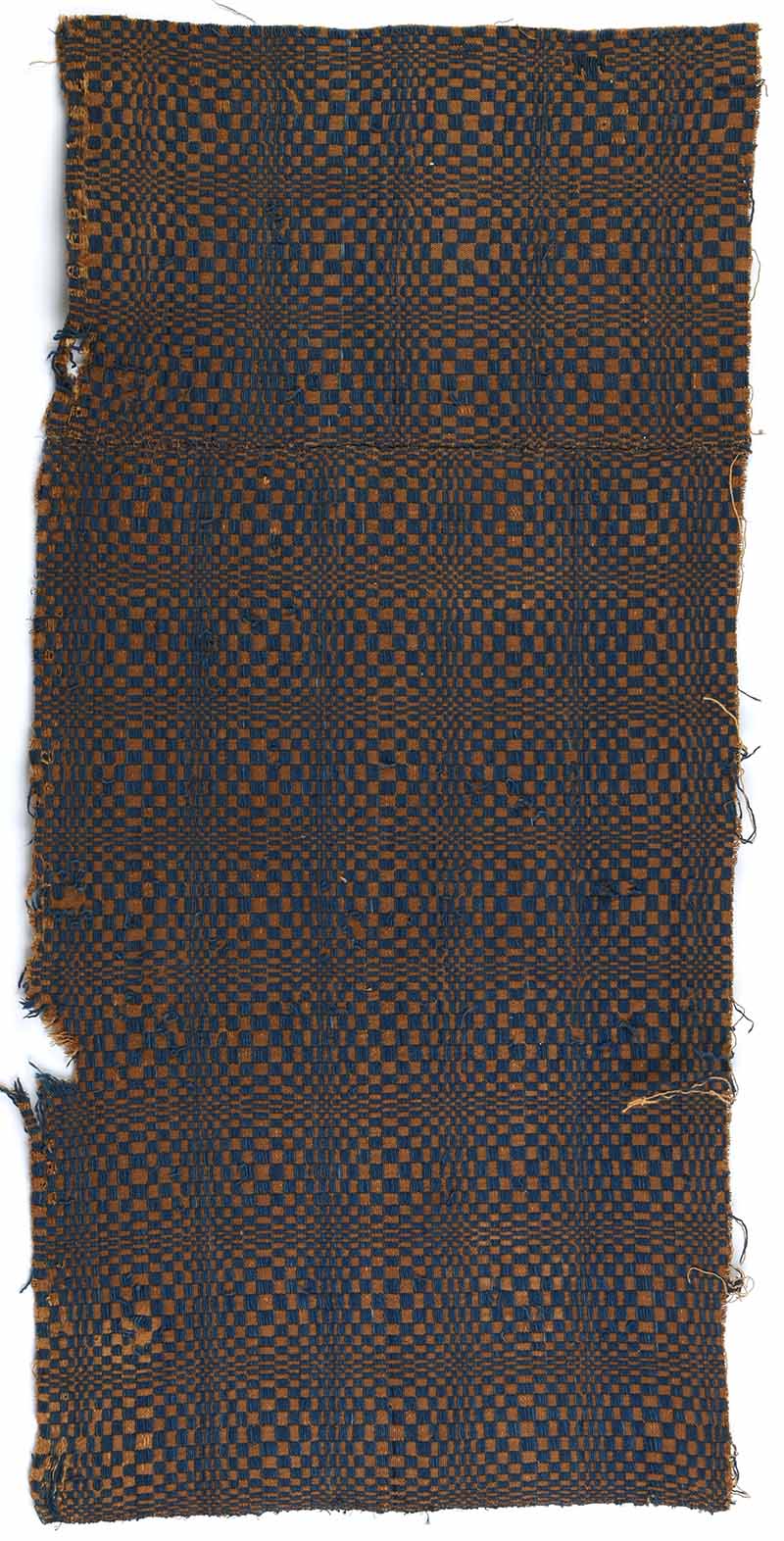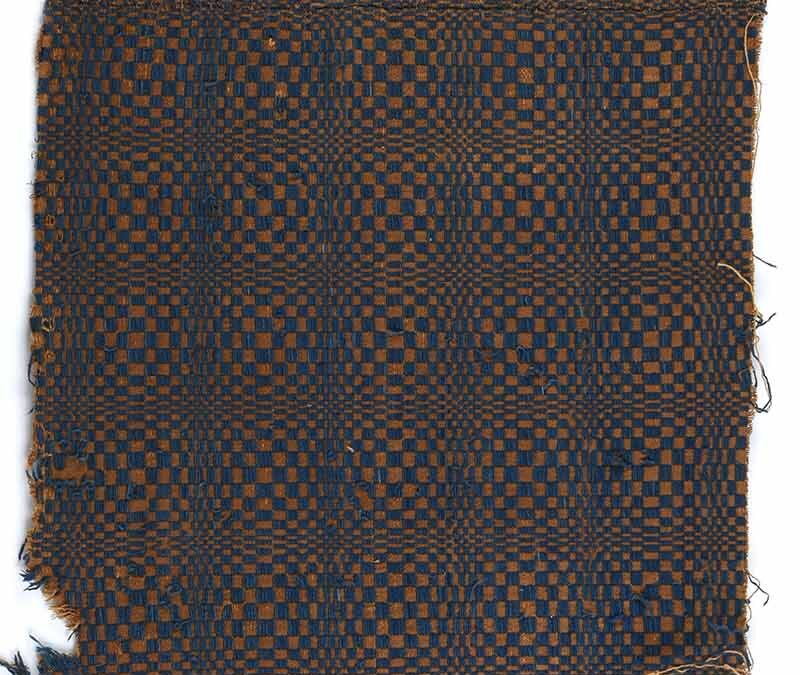
| Maker | Unknown |
| Date of Creation | 1854–65 |
| Location | Troup County, Georgia |
| Materials | Cotton, wool |
| Institution | The Columbus Museum |
| Credit Line | The Mr. and Mrs. Perry David Watson Memorial Fund |
| Accession Number | G.2017.74 |
| Photo Credit | Courtesy of The Columbus Museum, Georgia |
This fragment of a blue and brown cotton and wool coverlet, slightly frayed and faded, was likely woven by an enslaved African American in west-central Georgia between 1854 and 1865. Overshot patterns could be created on four-harness looms frequently found in 19th-century homes. Starting with a checkerboard pattern over the ground cloth, the weaver of this coverlet created the effect of rounded squares by gradually compressing them at regular intervals to create a repetitious yet stunning pattern. The basis of the design is Monk’s Belt, a classic block weave. The coverlet’s unusually heavy single-ply blue wool yarn, dyed with indigo, may have been spun by hand. The brown ground cloth was likely hand-dyed using black walnut, a tree native to Georgia and rich in tannin that helped make the color fast.
By 1850, Troup County’s fertile agricultural soil had attracted many Euro-American settlers. James and Sarah Jane Lovelace joined nearly a quarter of white Chattahoochee Valley residents as yeoman farmers, depending on subsistence agriculture. They enslaved two African American adults, including a 21-year-old woman identified by Lovelace descendants as the coverlet’s maker. Consideration of labor practices on Antebellum yeoman farms suggests that Sarah Jane Lovelace and her mother-in-law may also be possible makers. Among the relentless pace of textile production for enslavers’ households, some enslaved women created fancy dress for themselves with colorful patterns. Just as they adapted existing designs for self-expression through clothing, adjusting standard production methods might have provided an element of creative enjoyment while doing necessary work. Rather than creating an entirely original work that would have required additional time, the weaver of this coverlet adapted an existing pattern and varied the standard material. This coverlet speaks to enslaved women’s creativity and has been featured as such in five books of American craft and a Smithsonian exhibition.

